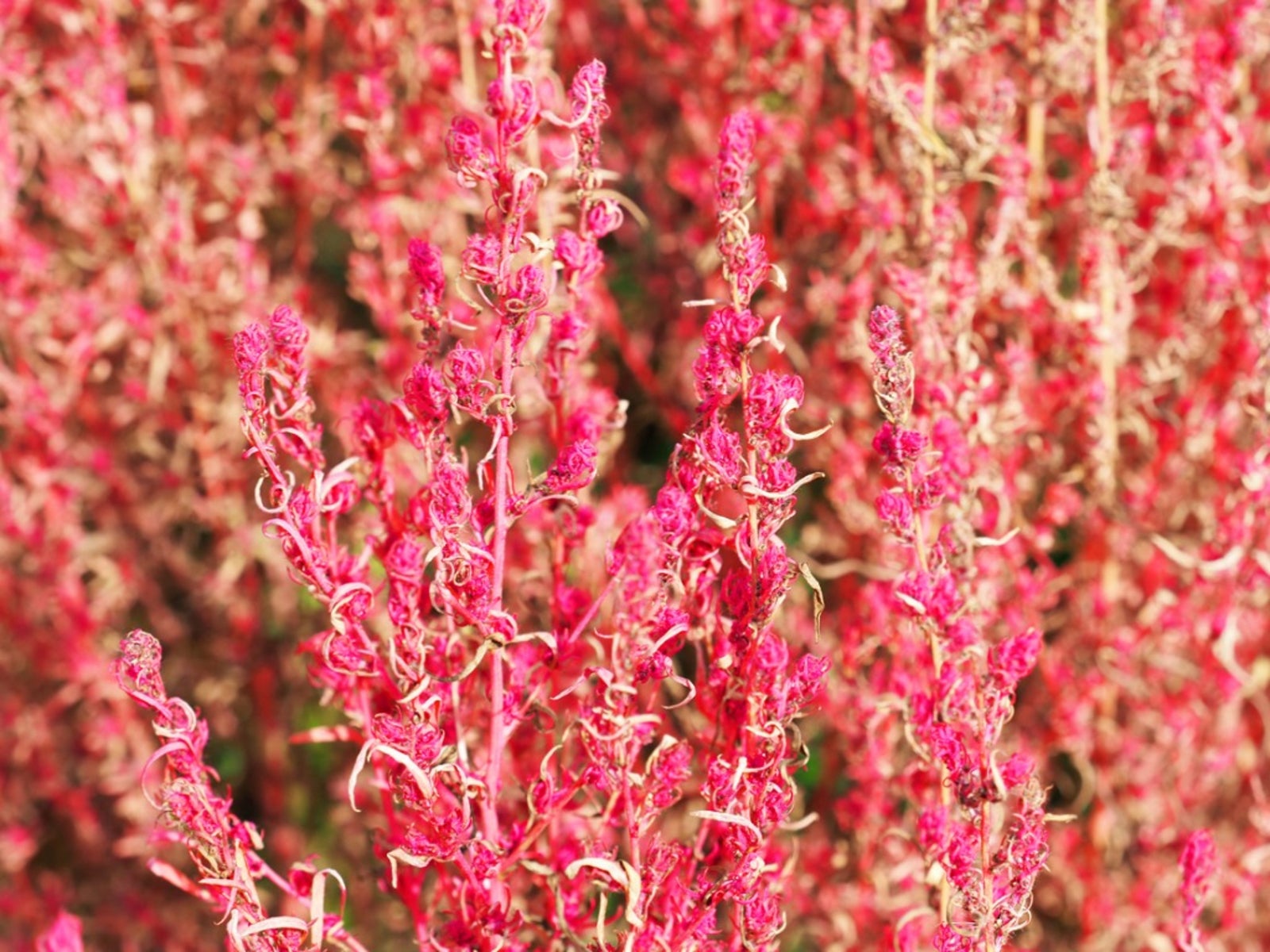Kochia Plant Info: Learn About Kochia Burning Bush And Its Management


Kochia scoparia grass (Kochia scoparia) is an attractive ornamental plant or a troublesome invasive species, depending on a number of factors, including your geographic location and your purpose for growing the plant. If this has piqued your curiosity, keep reading for more detailed kochia plant info.
Kochia Plant Info
So what is Kochia? Kochia scoparia grass is also known as fireweed or kochia burning bush for a couple of reasons. The most obvious is the flaming red color that the plant takes on in autumn. The second reason for the fiery references is not so benign-- when the kochia grass dries and turns into a tumbleweed, it is extremely flammable. Kochia burning bush was introduced to the United States by European immigrants who hoped to bring a touch of home into their new environment. Unfortunately, like many non-native species, kochia soon escaped its boundaries and became highly invasive. Kochia puts down roots in poor, rocky soil, creating huge problems in the arid grasslands, prairies, and scrublands of the northern and western United States and Canada. It tends to take over along roadsides and in pastures. In fact, it is a useful plant in burned or damaged areas, as it establishes quickly and stabilizes the soil. Cattle, sheep, and horses love kochia, which tastes much like alfalfa. However, the plant is toxic and can cause kidney and liver failure in animals that eat large quantities. The plant is useful as long as livestock growers manage the plant carefully so it is never the sole source of forage. However, keeping Kochia scoparia grass from running rampant isn't an easy task. If you're a denizen of prairie and desert regions, you're familiar with tumbling tumbleweeds that occur when kochia dries and breaks off at the base of the plant. As the dry skeleton tumbles, it spreads thousands of seeds far and wide. Additionally, the sturdy roots can grow 10 feet (3 m.) into the soil in search of water.
Kochia Control
Preventing development of seedheads is the first step in kochia control. The plant must be mowed frequently so it never grows beyond 18 to 26 inches (46-66 cm.). Kochia control may also involve use of pre-emergent herbicides, which provide control before seedlings emerge, or a post-emergent herbicide that controls the plant after seedlings emerge and are less than 4 inches (10 cm.) tall. Many people mix pre-emergent and post-emergent herbicides to provide more complete control. Don't apply herbicides unless you are sure the chemicals are registered for control of kochia scoparia grass. Complicating the matter even more is the fact that kochia is resistant to some herbicides, including 2,4-D. This is a good time to seek the advice of your local Agricultural Extension Agent. If you can manage kochia for two or three years and prevent it from going to seed, you may win the battle; the seeds hiding in the soil are relatively short-lived.
Gardening tips, videos, info and more delivered right to your inbox!
Sign up for the Gardening Know How newsletter today and receive a free copy of our e-book "How to Grow Delicious Tomatoes".

A Credentialed Garden Writer, Mary H. Dyer was with Gardening Know How in the very beginning, publishing articles as early as 2007.
-
 Terrifically Tubular Flowers For Hummingbirds: 9 Tube-Flowered Plants To Attract Hummers
Terrifically Tubular Flowers For Hummingbirds: 9 Tube-Flowered Plants To Attract HummersGrowing tubular flowers for hummingbirds helps you create the optimum feeding conditions for your winged friends. Here are nine tubed delights for hummers
By Tonya Barnett
-
 How To Grow Hydroponic Tomatoes For Fresh Indoor Harvests – No Soil Required
How To Grow Hydroponic Tomatoes For Fresh Indoor Harvests – No Soil RequiredLearning how to grow tomatoes in water is easy and allows you to harvest fresh-home-grown produce in every season without any mess.
By Ellen Wells